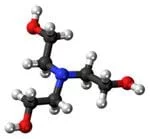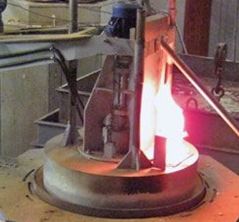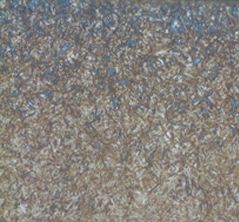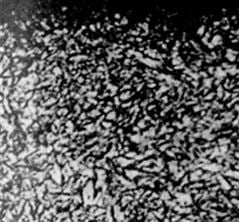Nitrocarburizing
Description
 Nitrocarburizing is a process of simultaneous saturation of steel with carbon and nitrogen in a gas environment, usually consisting of carburizing gas and ammonia, or decomposition products of liquid carburizer – triethanolamine (C2H5O), which is introduced in the form of drops into the working space (sealed retort) of the furnace.
Nitrocarburizing is a process of simultaneous saturation of steel with carbon and nitrogen in a gas environment, usually consisting of carburizing gas and ammonia, or decomposition products of liquid carburizer – triethanolamine (C2H5O), which is introduced in the form of drops into the working space (sealed retort) of the furnace.
Our company “Karbaz” has been engaged in surface hardening of tools and parts for 9 years. Today, one of the most popular services is steel nitrocarburizing, which is widely used in tractor and automotive industries for rubbing parts. The purpose of this technology is to increase the strength and wear resistance of products.
Our technical capabilities for nitrocarburizing
Dimensions of products for nitrocarburizing
Diameter of parts up to 500 mm.
Length of parts up to 1000 mm.
Weight up to 200 kg
Hardening of parts after nitrocarburizing
– in water up to 200 kg.
– in oil up to 100 kg.
Our technical capabilities for nitrocarburizing
Dimensions of products for nitrocarburizing
Diameter of parts up to 500 mm.
Length of parts up to 1000 mm.
Weight up to 200 kg
Hardening of parts after nitrocarburizing
– in water up to 200 kg.
– in oil up to 100 kg.
ADVANTAGES COMPARED TO CEMENTATION
This allows to reduce the process temperature to 840-860°C. Such temperature, in comparison with the carburization temperature (910-940°C), leads to less warping of the products.
Due to the relatively low temperatures of the process, the austenite grain grows less during nitrocarburization than during carburization during the cementation process.
The process of nitrocarburizing in some cases is much faster than the process of cementation. In this case, most often, there is no need to do hardening with repeated heating, as in cementation.

DESCRIPTION OF THE PROCESS
This process involves treating steel in a gas environment with nitrogen and carbon. For nitrocarburizing steel 40x ammonia is used,the products of decomposition of the carburizer – triethanolamine or carburizing gas. Due to the fact that nitrocarburizing is carried out at temperatures of 850-870 ° C, the critical points of the metal are lowered, which contributes to a significant reduction in the deformation of parts.
Usually, all alloyed types of steel containing 0.25% carbon are subject to nitrocarburizing. After 4-10 hours of nitrocarburizing, a hard surface layer is formed on top. The austenite included in it guarantees excellent running-in of parts, which makes their operation noiseless.
What is better, nitrocarburizing or conventional cementation?
The advantages of nitrocarburizing over standard cementation are very noticeable, they include:
- Lower temperature conditions. If the standard temperature of carburizing is 910-940 degrees Celsius, then low-temperature nitrocarburizing is within 840-860 degrees.
- Not too high temperatures lead to the fact that the austenite grain grows much less with this technology.
- The nitrocarburizing procedure is faster than conventional carburizing, and in this case the time is also reduced by the fact that there is no need to harden the parts after secondary heating.
Our company provides services for nitrocarburizing parts with a diameter of up to 500 mm and a length of up to 1000 mm with subsequent hardening in oil or water. The cost of nitrocarburizing is very moderate. Place an order on the website or by phone.



Nitrocarburizing
is a heat treatment of metal, in which the surface layer of steel is saturated with nitrogen, improving its mechanical properties and wear resistance. Karbaz Company offers services for nitrocarburizing steel at low and medium temperatures.
Low-temperature nitrocarburizing is carried out at a temperature of 500-550 degrees Celsius for 10-60 hours. It allows you to achieve a steel surface hardness of up to 70 HRC, as well as increase its resistance to corrosion, fatigue and wear. This technology is used in the production of tools, gears and other parts operating under high loads and wear.
Medium-temperature nitrocarburizing is carried out at a temperature of 580-650 degrees Celsius for 2-12 hours. It allows you to achieve a steel surface hardness of up to 65 HRC and increase its wear resistance. This technology is used to manufacture car parts, agricultural and construction equipment, as well as to improve the quality of tools.
Nitrocarburizing is an effective way to improve the properties of steel, which allows to significantly increase its resistance to various impacts and extend its service life. Karbaz Company offers high-quality nitrocarburizing at low and medium temperatures, providing reliability and quality of services to its customers.
